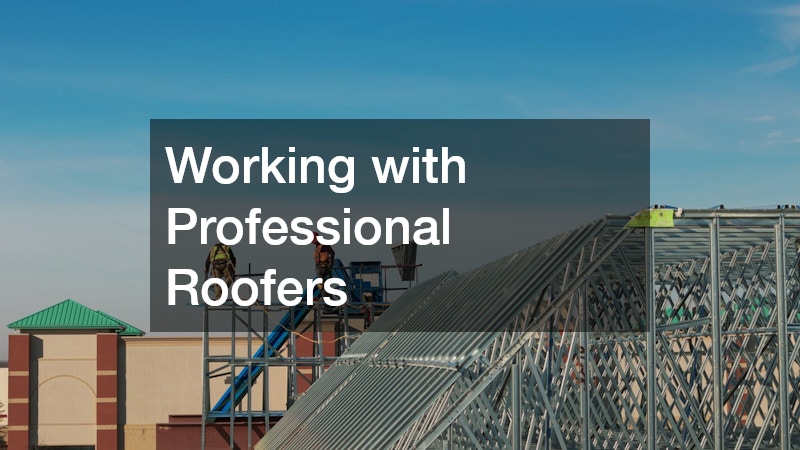This article addresses the importance of ensuring that your commercial roofing is up to code, focusing on safety and compliance. Understanding the relevant regulations is crucial for maintaining building integrity and avoiding potential liabilities. By thoroughly comprehending both local and national regulations, businesses can ensure structural soundness and protect investments.
Understanding Local and National Building Codes
Building codes vary significantly between regions, reflecting local priorities and environmental conditions. National codes provide a baseline that ensures a certain level of safety and quality across the entire country. However, local codes often include additional specifications to address unique weather patterns or environmental concerns specific to that area.
Understanding these distinctions is crucial for compliance and avoiding potential legal issues. Businesses need to ensure that their commercial roofing meets both sets of standards to maintain operational integrity. Local professionals often possess the nuanced understanding required to navigate these regulations effectively.
Engaging with these codes ensures that your commercial roof can withstand environmental demands. Not only does this prevent damage, but it also helps in maintaining a safe environment for building occupants. Regularly updated building codes are designed to incorporate the latest safety technologies and materials.
Safety Standards and Compliance Requirements
Ensuring safety in commercial roofing involves adherence to various key standards. Fire resistance is a critical aspect, with materials needing to meet stringent requirements to prevent the spread of flames. Similarly, wind uplift ratings help determine a roofing system’s resilience to severe weather conditions.
Load-bearing capabilities also play a crucial role, dictating how much weight your roof can safely support. These standards are particularly important in areas prone to heavy snowfall or where rooftop equipment is installed. Compliance helps mitigate risks of structural failure and subsequent safety hazards.
A comprehensive understanding of these safety standards is vital for any business owner. Non-compliance not only risks the safety of building inhabitants but can also lead to costly repairs. Investing in regular compliance checks can help businesses avoid these pitfalls.
Regular Inspections and Certifications
Regular inspections are a critical aspect of maintaining compliance with roofing codes. Engaging professional inspectors helps identify potential issues before they escalate into costly repairs. These inspections are often legally mandated, providing a safety net against non-compliance penalties.
Certifications obtained through these inspections serve as documented proof of compliance. They offer reassurance to stakeholders that the building adheres to the required safety and environmental standards. Moreover, they are invaluable in negotiating insurance premiums and selling the property.
Consistently scheduled inspections contribute to the longevity and durability of your commercial roofing. They not only help in compliance but also ensure the roof’s optimal functionality. By identifying potential problems early, businesses can address them proactively, often resulting in significant cost savings.
Working with Professional Roofers
Certified professional roofing contractors employ specialized expertise to uphold building code standards. Their understanding of the latest materials and technological advancements ensures that your roof meets all necessary requirements. Additionally, they provide invaluable advice on sustainable practices and innovative solutions.
Collaborating with professionals mitigates risks associated with non-compliance. Their experience with regional codes enables them to navigate local regulatory landscapes proficiently. This partnership is not just about oversight but also about ensuring the highest quality of craftsmanship.
Professional roofers are also adept at identifying unique challenges specific to your building. They tailor solutions that are both cost-effective and compliant with evolving standards. In the long term, this approach contributes to minimizing the risk of legal and financial repercussions.
Upgrading and Repair Strategies
To comply with changing regulations, businesses may need to undertake upgrades or repairs to their roofing systems. Proactive improvements can enhance both the aesthetic and functional aspects of a building while ensuring compliance. A strategic approach often involves a thorough assessment of current deficiencies against existing codes.
Technological advancements in roofing materials provide opportunities to enhance energy efficiency and environmental performance. By investing in modern solutions, businesses can align themselves with new codes while potentially reducing operating costs. For example, integrating reflective materials can significantly cut energy consumption in warmer climates.
Legal and Financial Ramifications
Non-compliance with commercial roofing codes can result in significant legal and financial consequences. Violations may lead to hefty fines and necessitate costly retrofits or repairs. In some cases, businesses may face legal action, particularly if injuries or damages occur due to non-compliant roofing.
Financial penalties can extend beyond direct fines, impacting insurance premiums and property values. Non-compliant properties may attract less favorable insurance terms or be deemed uninsurable altogether. These issues can become substantial burdens for businesses, affecting profitability and financial stability.
Failure to comply with building codes may also result in operational disruptions. Building closures or restrictions can lead to lost revenue and damaged business reputations. Maintaining compliance is thus essential for both legal protection and financial continuity.
Impact on Insurance and Liability
Insurance coverage heavily relies on the compliance status of commercial roofing. Non-compliant roofs may not qualify for coverage or could lead to higher premiums. Insurers view compliant buildings as lower risk, often offering more advantageous terms.
Ensuring your commercial roofing meets all relevant codes is crucial for legal compliance, safety, and financial protection. By understanding and adhering to building codes, you protect your business and its occupants, securing peace of mind and operational continuity. Vigilance in maintaining compliance is not only a legal obligation but also an investment in your business’s future.






